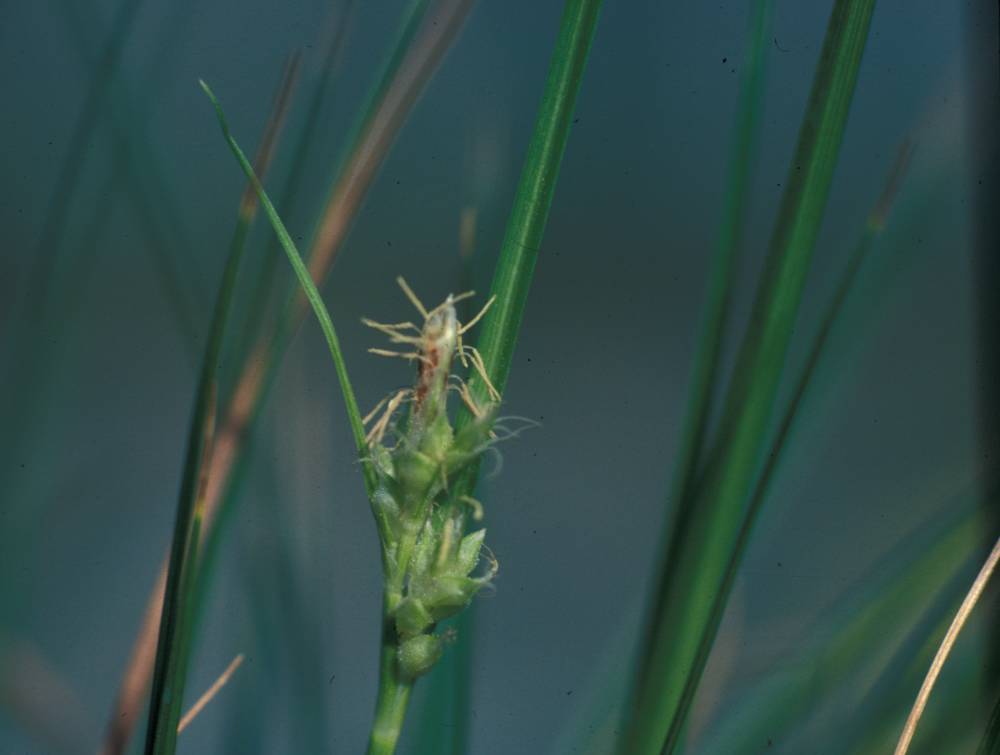Carex deflexa var. boottii
mountain mat sedge
blades 0.9–2.6(3.2) mm wide, green, usually longer than the culms, not densely papillose on the lower surface.
basal spikes female, 0–3; more or less hidden among leaf sheaths or sometimes raised on stalks much longer than the spike, bract of lowest non-basal spike leaf-like; longer than the inflorescence; non-basal female spikes 1–4, 0.3–0.8 cm long, with 4–15 perigynia; terminal spike male, 0.3–1.1 cm long.
of lateral (non-basal) spikes elliptic to obovoid, 2.3–3.1 × 1–1.4 mm, pubescent; veinless but with 2 ribs, bases succulent, withering when dry;
beaks 0.4–0.8 mm;
teeth 0.1–0.2 mm long;
stigmas 3.
trigonous.
shorter than the perigynia; pale to dark reddish brown with white margins;
apex acute to acuminate.
Carex deflexa var. boottii
Establishing in disturbed openings and persisting in open forests in mountains, at elevations where there is snow for much of the winter. 800–2500 m. BW, Casc. CA, ID, WA; north to British Columbia, east to CO. Native.
Carex deflexa var. boottii is an upland taxon with hairy perigynia and basal spikes hidden among the leaf sheaths. It is very similar to C. rossii, which typically has a longer beak and tougher leaves and grows at lower elevations.
Barbara Wilson, Richard Brainerd, Nick Otting
- Local floras:
BC,
CA,
OR,
WA
- Local Web sites:
CalFlora,
CalPhotos,
Flora NW,
PNW Herbaria
WildflowerSearch
iNaturalist (observations)
- LBJ Wildflower Center
- SEINet
- Plants of the World Online
- Encyclopedia of Life
- Wikipedia
- Google Image Search

